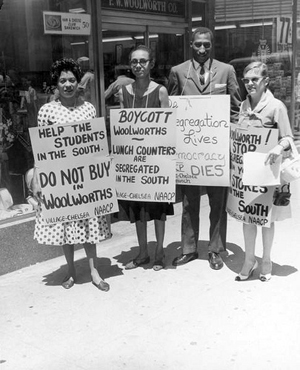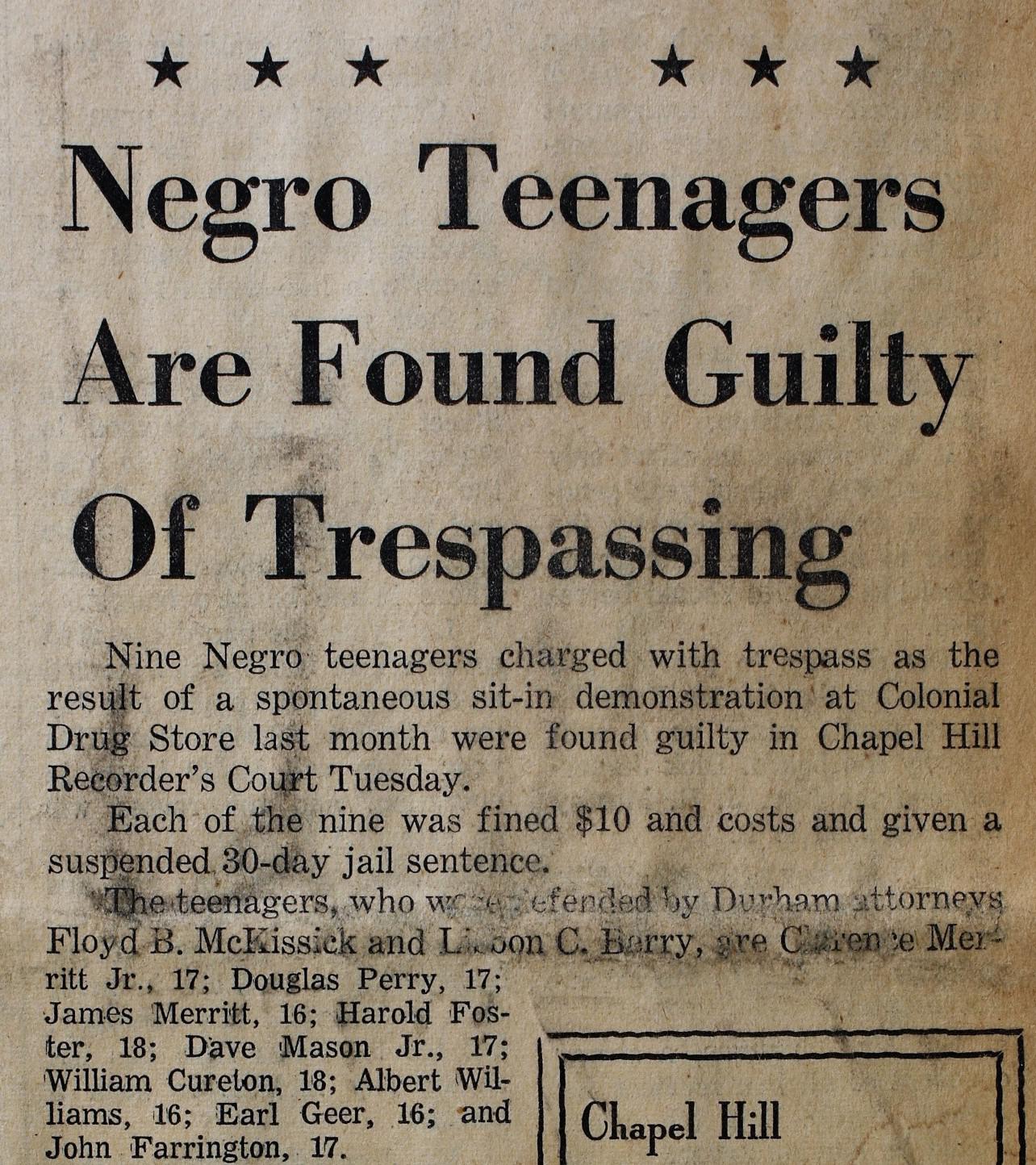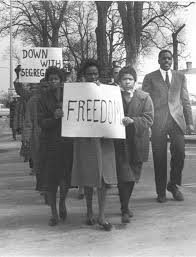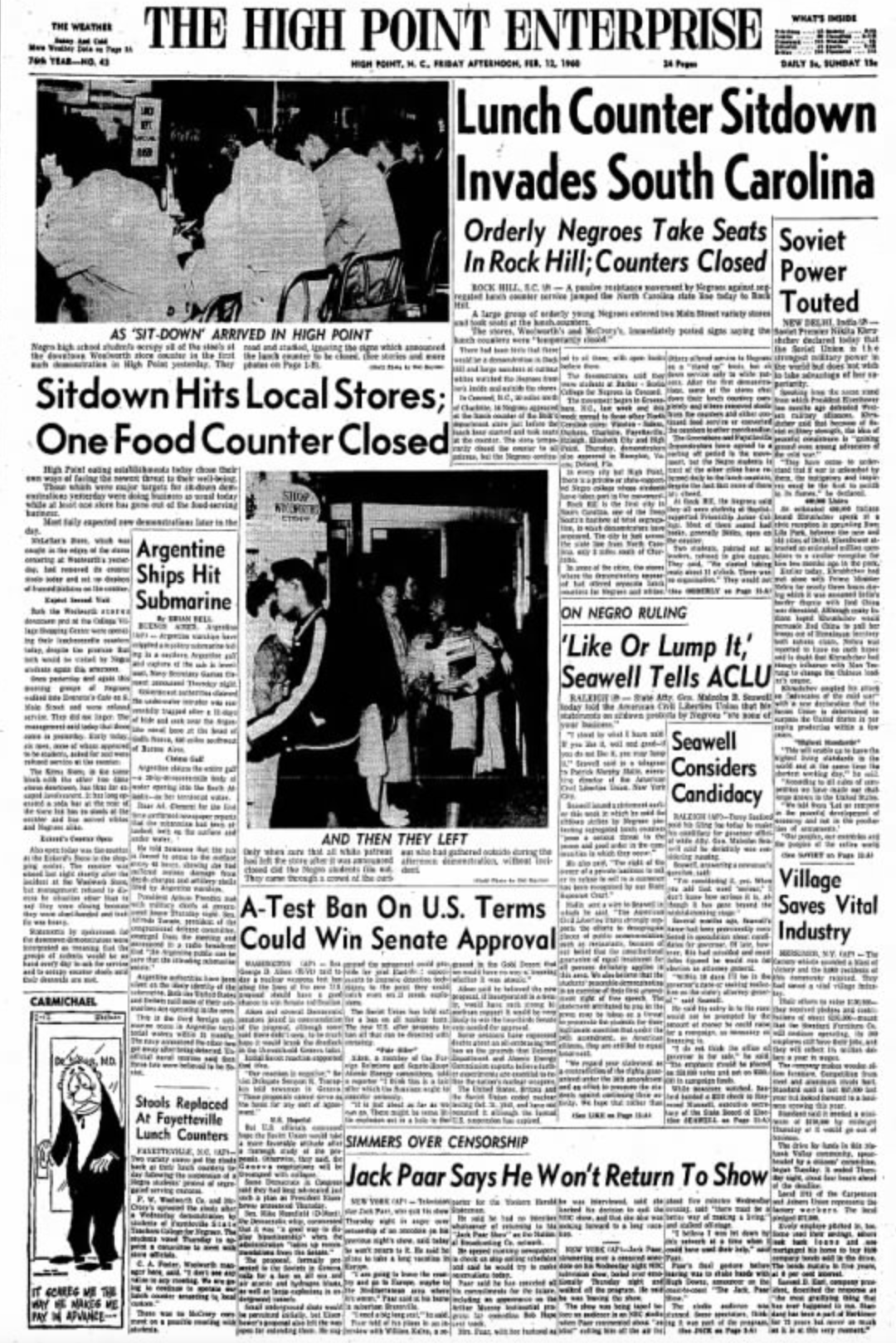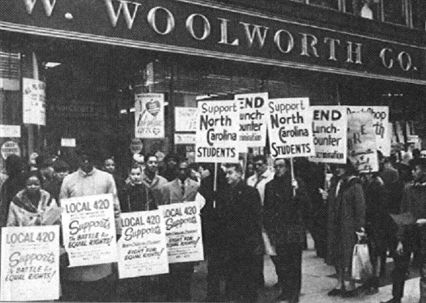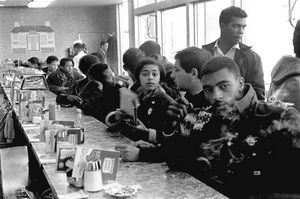Repercussions
Immediate Impacts
The Greensboro Sit-In-Movement created many short term impacts that shouldn’t be overlooked, like making Sit-In-Movements widespread across the south. They helped end segregation in many states across America, during the 1960’s by communicating the need for racial equality.
"[Sit-ins were] my introduction to the civil rights movement and it was instructive because it said that even though I wasn't a lawyer, I wasn't an orator like Martin Luther King, I wasn't an academic, I was a student. I was a college student but I could do this one thing-sit down, which I'm doing right now, that all of us can do, and that got me into the civil rights movement"
~ Julian Bond
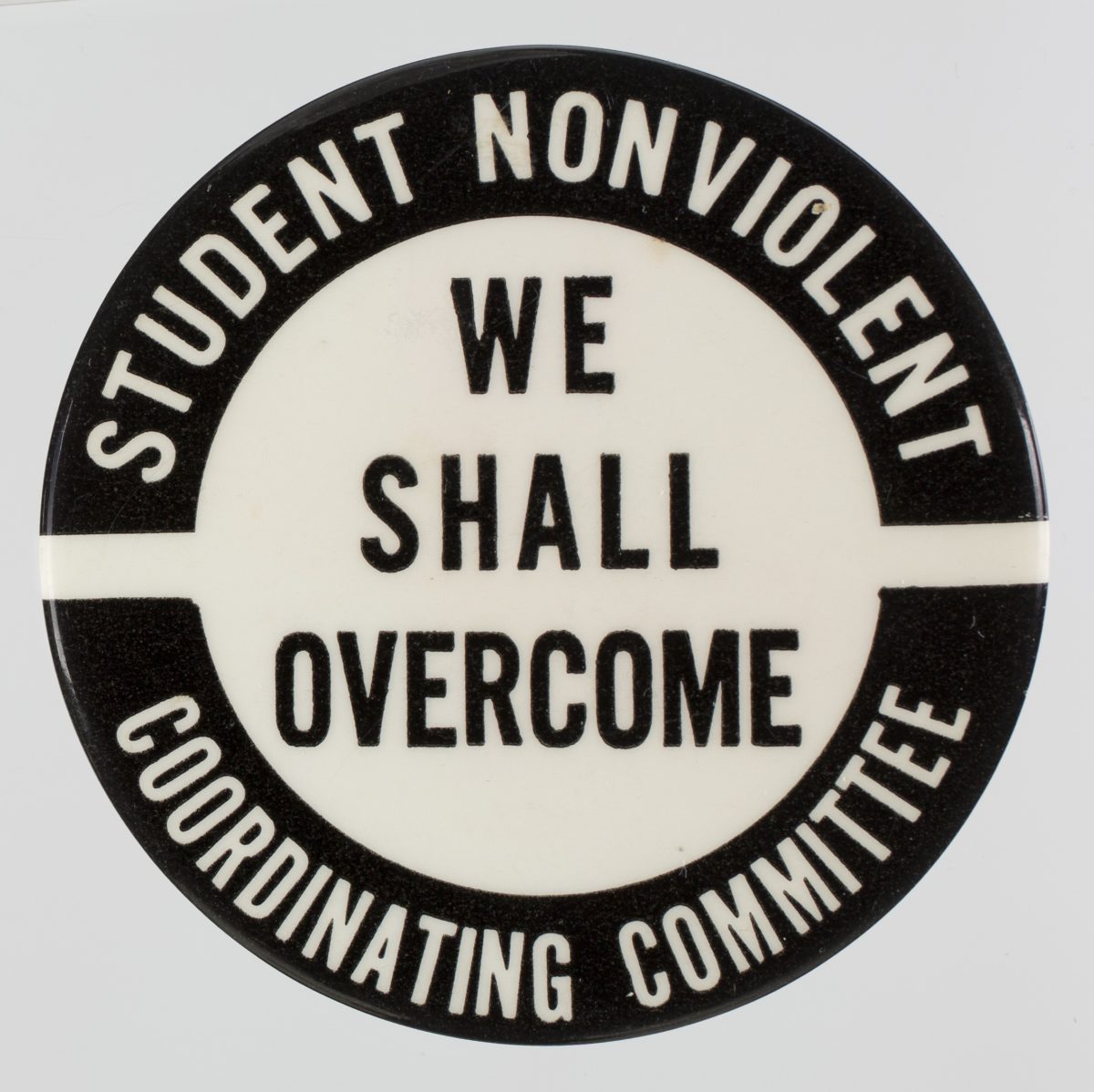
Generosity 1965; This is the SNCC logo.
The Greensboro Sit-In-Movement inspired people to use their voice and encouraged people to stand up for what they believe in. The Sit-In-Movements created the SNCC (Student Nonviolent Coordinating Committee) which was formed in response to the Greensboro Sit-In-Movement. The committee formed to give younger black people a better start from the beginning, and a more powerful voice.
"I would like to be known as a person who is concerned about freedom and equality and justice and prosperity for all people." ~ Rosa Parks
The Greensboro Sit-In-Movement helped progress the Civil Rights Movement and helped pave the way for other forms of peaceful protests. The Sit-In-Movements and its nonviolence also inspired the Freedom Riders. The freedom riders were nonviolent protesters, fighting for racial equality. These brave black men and women rode interstate buses into the segregated south, and communicated what they believed in.
